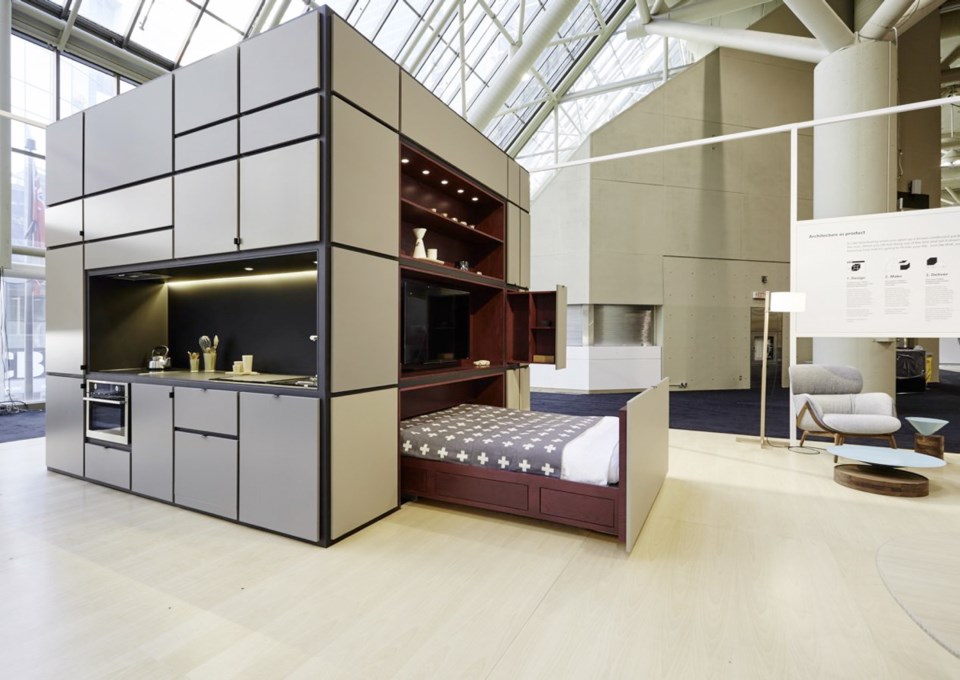Have you noticed that more and more space is being taken up with the challenge of less and less space?
An almost overwhelming surge of new condominium builds endeavours to keep up with the demand for living space in highly sought-after urban areas. Prices soar as the average square footage of apartments dwindles. This is today’s reality. And this reality is the framework within which great architects and designers stretch their talents.
What do we require in a living space? How can we adjust our concepts of an acceptable working design that combines the practicality of less with the desire for more?
Urban Capital and Nichetto Studio developed an experimental concept called Cubitat for the recent Interior Design Show in Toronto. Everything necessary to live — to cook, sleep, bathe, launder and store stuff — fit within a three-metre cube. Viewing Cubitat at the Show was a peek into the future but, as I examined each side of the cube and how it all played out, it was clearly not science fiction. This cleverly formulated, architectural design worked well.
One side is the kitchen with compact fridge, oven, stove top, sink, dishwasher (in a drawer) and storage cabinets and shelves.
The second side is the bedroom with a bed that pulls out, a TV above and storage under and beside the bed.
The third side is a bathroom with toilet, sink and shower plus a two-in-one laundry unit that doesn’t require venting.
The fourth side holds a wardrobe and more storage. Imagine Cubitat sits in the middle of an otherwise empty condo space of 500 square feet. The area outside the cube is the living space, with room for dining table and chairs and a sitting area to relax and watch a favourite program on the screen situated in the cube above the bed.
All the electricals and plumbing are in place within the cube so the resident simply hooks up to existing services and it’s done.
“In order to make small space design work, we need compact products that meet the requirements of the homeowner at an affordable price,” says David Wex, co-founder and partner at Urban Capital.
The kitchen in Cubitat has a two-burner stove top, a slim fridge and a dishwasher in a drawer, all products that, because of their non-standard size, have either been unavailable in North America or are prohibitively expensive.
This is changing as demand increases. Prices have dropped and the trend will continue.
Wex continues: “Cubitat shows what can be done, it showcases an architectural product that the public can hypothetically order on line.”
With the launch of Urban Capital’s Smart House, micro-living has become a reality. Smart House was the winner of the 2014 BILD Award for Best Small Suite Design.
Condos as small as 300 square feet are designed and furnished with components that do double duty or more, such as expandable kitchen counter space, dining tables built into islands, smart appliances and movable partitions.
“Here’s an option for people who want to live in the downtown core with all its amenities close at hand, but don’t have a million dollars or more to spend. The demand is growing and we are adapting,” says Wex.
Check out the website, urbancapital.ca. It appears that micro living is a smart option, and it is happening now.
Debbie Travis’s House to Home column is produced by Debbie Travis and Barbara Dingle. Please email your questions to [email protected]. Follow Debbie on Twitter at twitter.com/debbie_travis, and visit Debbie’s website, debbietravis.com.



